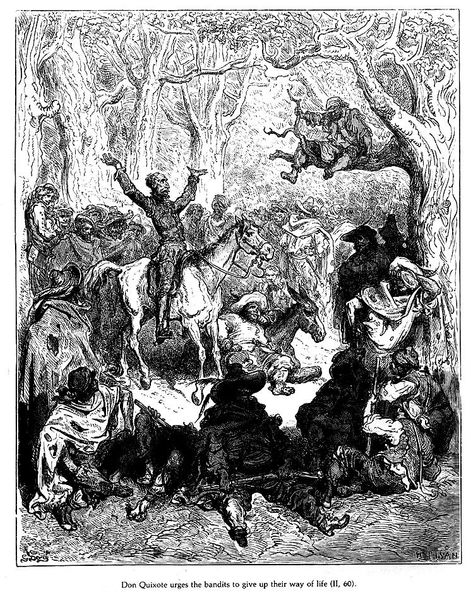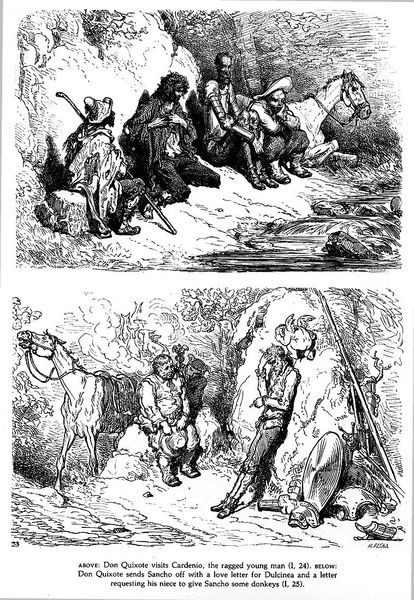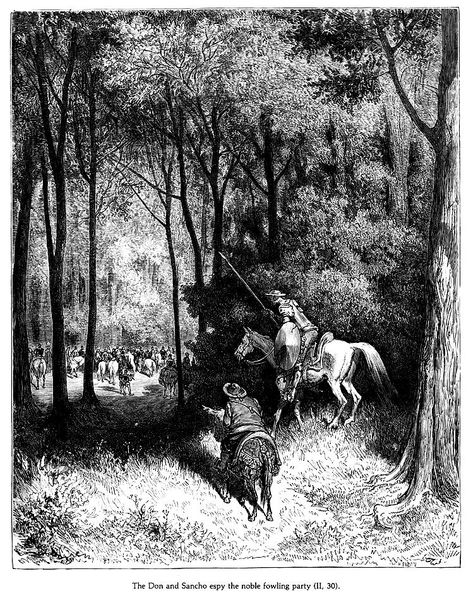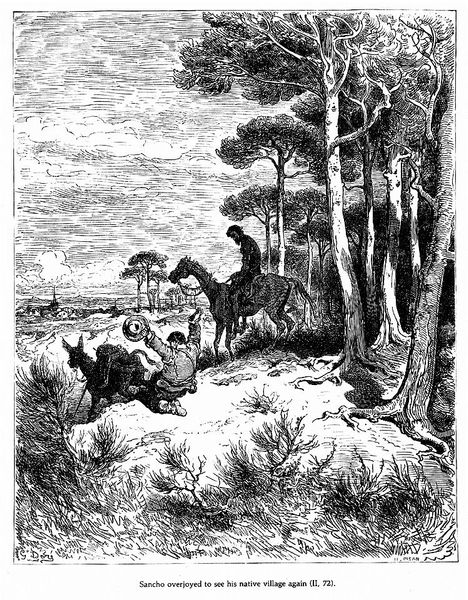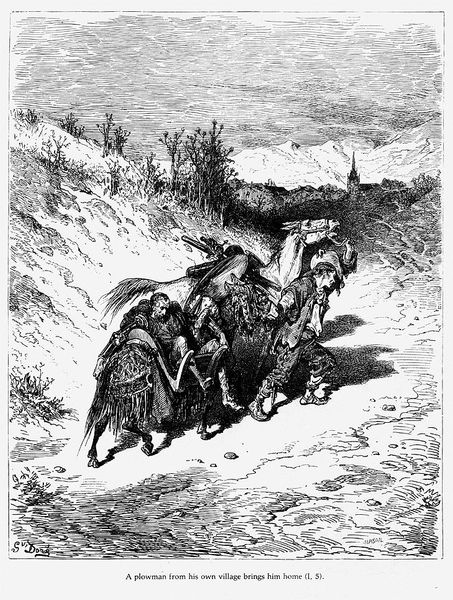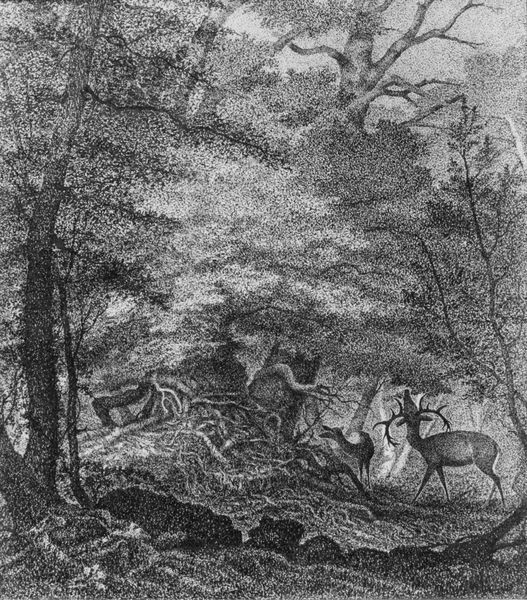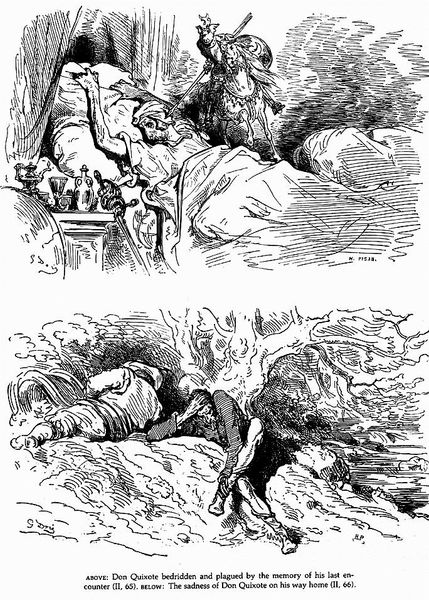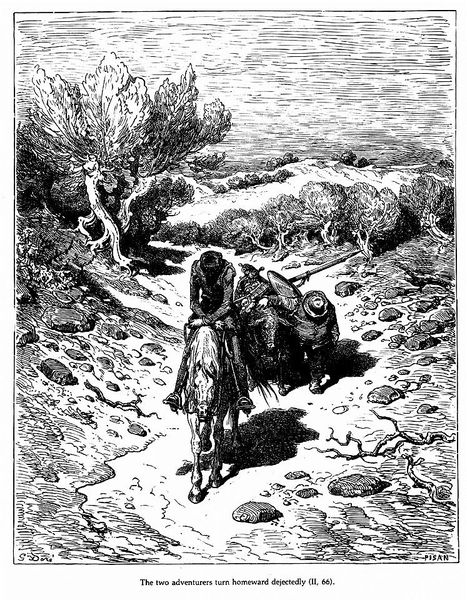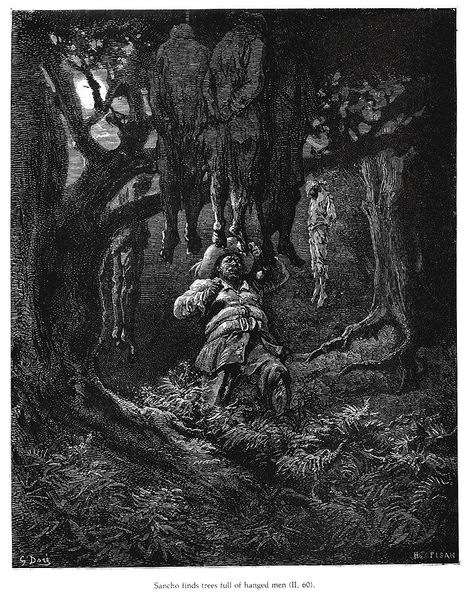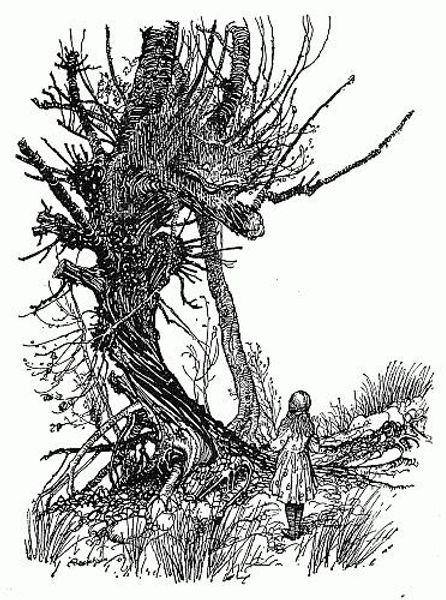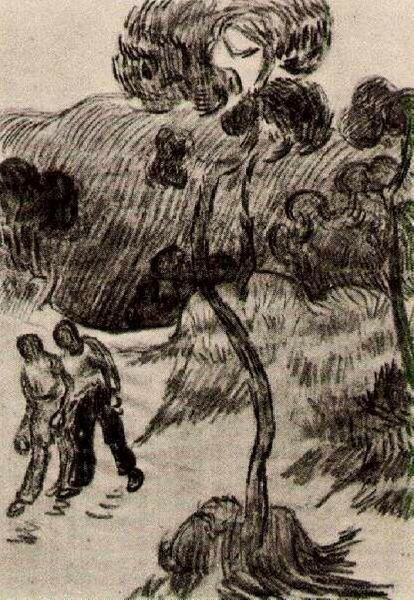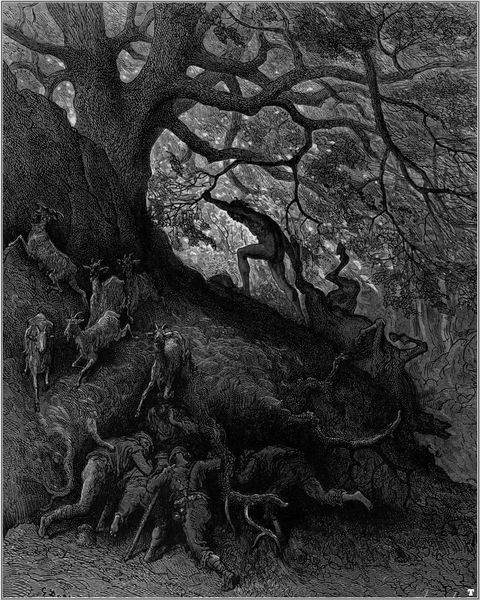
#
comic strip sketch
#
comic strip
#
animal
#
pen illustration
#
war
#
junji ito style
#
ink line art
#
linework heavy
#
horse
#
pen work
#
storyboard and sketchbook work
#
story boarding
#
intricate and detailed
Copyright: Public domain
Curator: This is Gustave Dore's "Don Quixote". The medium here appears to be pen and ink, which is interesting for the themes explored. What's catching your eye? Editor: It's intensely detailed. Look at the linework; it feels both meticulous and frantic, conveying a kind of chaotic energy. I'm curious about the choice of materials for something portraying such a legendary figure. Pen and ink seems almost... common? Curator: Dore's choice reflects a wider accessibility through print culture at the time. Engravings allowed for the widespread distribution of imagery, shaping popular understanding. The artwork becomes not just about high art, but a cultural artifact spread via relatively affordable means, shaping public understanding. Editor: Exactly. Mass production influencing perception, bringing Don Quixote from elite literature to something more widely consumed. It challenges the notion of a unique art object, placing value on distribution and access. Is it diluting the narrative or amplifying it? Curator: That’s a tension at the heart of Don Quixote itself. The story plays with the space between the noble and the mundane. I think Dore is very cleverly doing something similar, with an approach to his image-making rooted in the democratic impulse. Editor: I see the appeal in reaching broader audiences, but I can't help but think about the labor involved. Think about the time to create those minute lines and the repetitive work to duplicate this into prints. Who benefited, and what were the labor conditions involved? Curator: Good questions. While artists like Doré gained notoriety, the skilled laborers reproducing the plates were often less recognized. Art history needs to look at this more. In this context, it prompts considerations about the value of individual vision versus collaborative production and reception within society. Editor: So we’re back to accessibility versus the means of production and what they stand for. Dore's choices force us to examine both. It is also clear the artwork uses dark inking to create strong contrast between the heroic subject, and those figures behind, maybe to distinguish their relative levels of 'sanity'. Curator: I appreciate your insights into how this pen and ink piece embodies wider societal currents. Editor: Likewise. Thinking about it, there are far more components to unpack when you consider how artworks get constructed by different stakeholders to eventually be seen by the public.
Comments
No comments
Be the first to comment and join the conversation on the ultimate creative platform.
